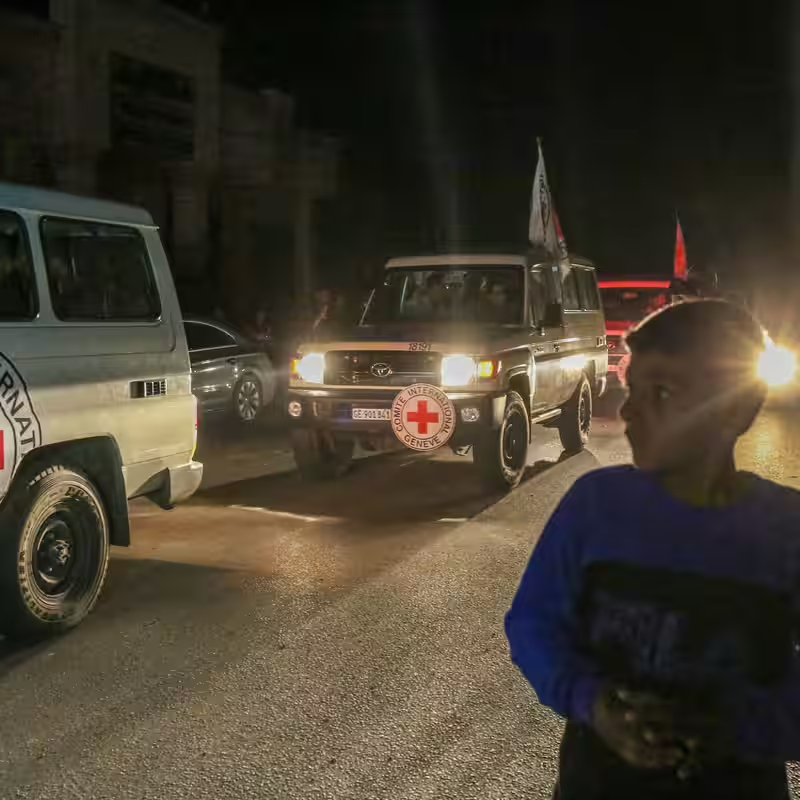Table of Contents
- The Red Cross’s Humanitarian Role in Conflict Zones
- How Red Cross Facilitates Israel-Hamas Prisoner Exchanges
- Behind-the-Scenes Diplomacy Few See
- Challenges and Risks Faced by Red Cross Teams
- Sources
Red Cross in Israel-Hamas Exchanges: More Than Just Escorts
When hostages and detainees are released in the long-running Israel-Hamas conflict, one neutral figure is almost always present: the International Committee of the Red Cross (ICRC). While many see the Red Cross simply as the organization that escorts freed individuals to safety, its role runs far deeper—spanning confidential diplomacy, logistical coordination, and relentless advocacy behind closed doors .
Since the latest escalation began, the Red Cross has escorted hundreds of people to freedom, including Israeli hostages, Palestinian detainees, and foreign nationals caught in the crossfire. But according to ICRC officials, these visible handovers are just the tip of the iceberg.
How Red Cross Facilitates Israel-Hamas Prisoner Exchanges
The Red Cross operates under the Geneva Conventions as a neutral intermediary—a rare entity trusted (at least minimally) by both sides. In practice, this means ICRC delegates often shuttle between Israeli and Hamas representatives to relay messages, verify identities, coordinate release timings, and ensure humane treatment of detainees.
Before any exchange, Red Cross teams typically visit detention sites to assess conditions and confirm the health and identity of those slated for release. On the day of the swap, they physically accompany individuals from custody to handover points—sometimes under fire—and ensure the process adheres to agreed protocols.
Red Cross Impact in Recent Exchanges (2023–2025)
| Year | People Escorted by Red Cross | Major Exchange Events |
|---|---|---|
| 2023 | 105+ | November Gaza ceasefire deal |
| 2024 | 80+ | Multiple small-scale humanitarian pauses |
| 2025 (YTD) | 120+ | October prisoner swap involving dual nationals |
Behind-the-Scenes Diplomacy Few See
What the public rarely sees is the months of quiet negotiation that precede each exchange. The Red Cross often acts as a confidential channel when direct talks are impossible. It delivers letters between detainees and families, advocates for medical evacuations, and pushes for access to those held incommunicado.
“We don’t take sides,” said an ICRC spokesperson in a recent briefing. “Our only mandate is humanity. But that neutrality is precisely what allows us to operate where others cannot.”
This neutrality, however, is increasingly tested. In 2024, Red Cross vehicles were struck twice near Rafah, and staff faced delays at Israeli checkpoints. Still, the organization maintains its presence, often the only international body with consistent access to both Israeli prisons and Hamas-controlled areas in Gaza.
Challenges and Risks Faced by Red Cross Teams
Operating in one of the world’s most volatile conflicts comes with immense risk. Red Cross workers must navigate active combat zones, bureaucratic roadblocks, and deep mistrust from hardliners on both sides. Yet they persist—not for headlines, but for the families waiting on either end of a silent phone line.
As one delegate put it: “We don’t celebrate when a swap happens. We breathe a sigh of relief—and then prepare for the next one.”




